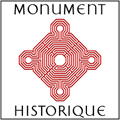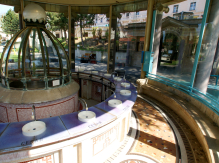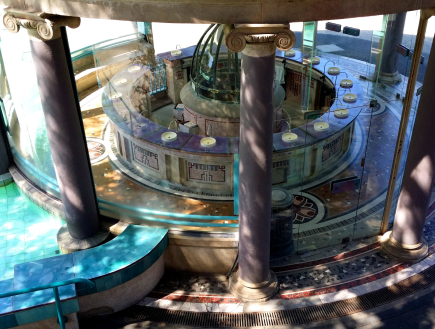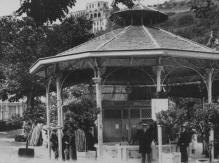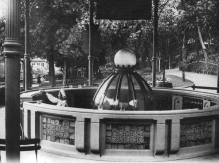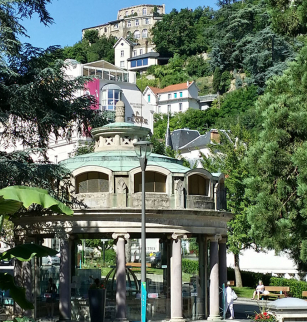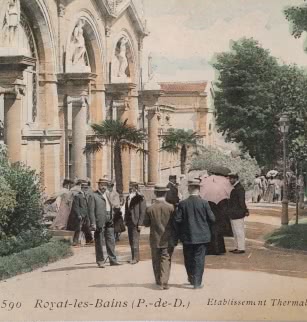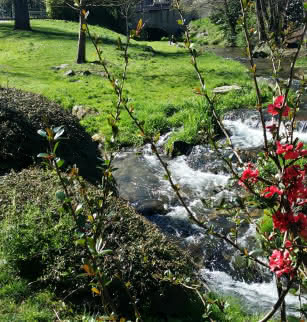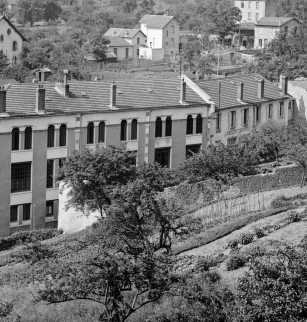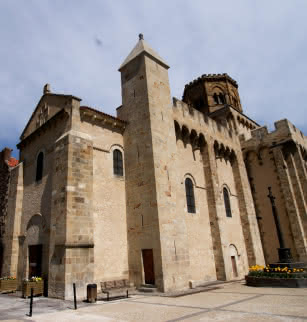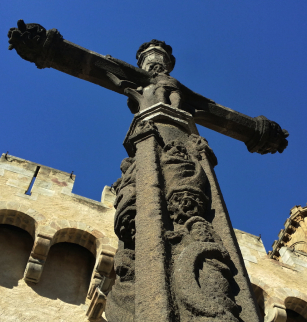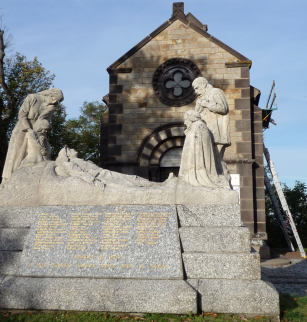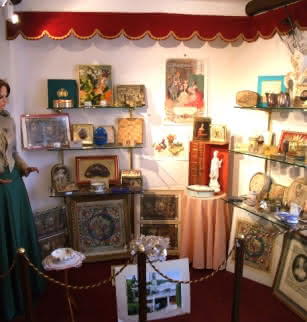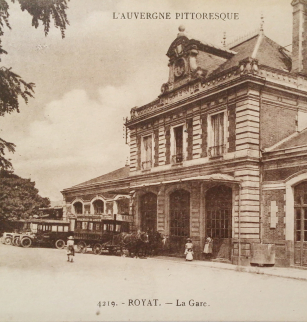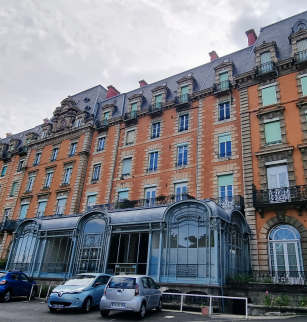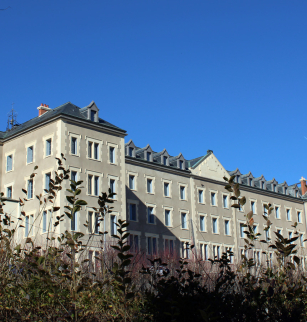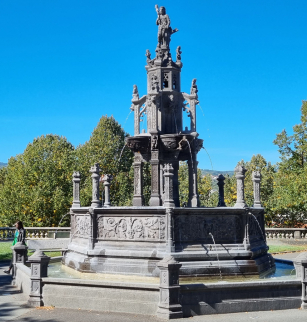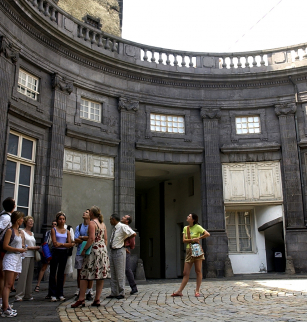Eugenie drink stand and Velleda Spring
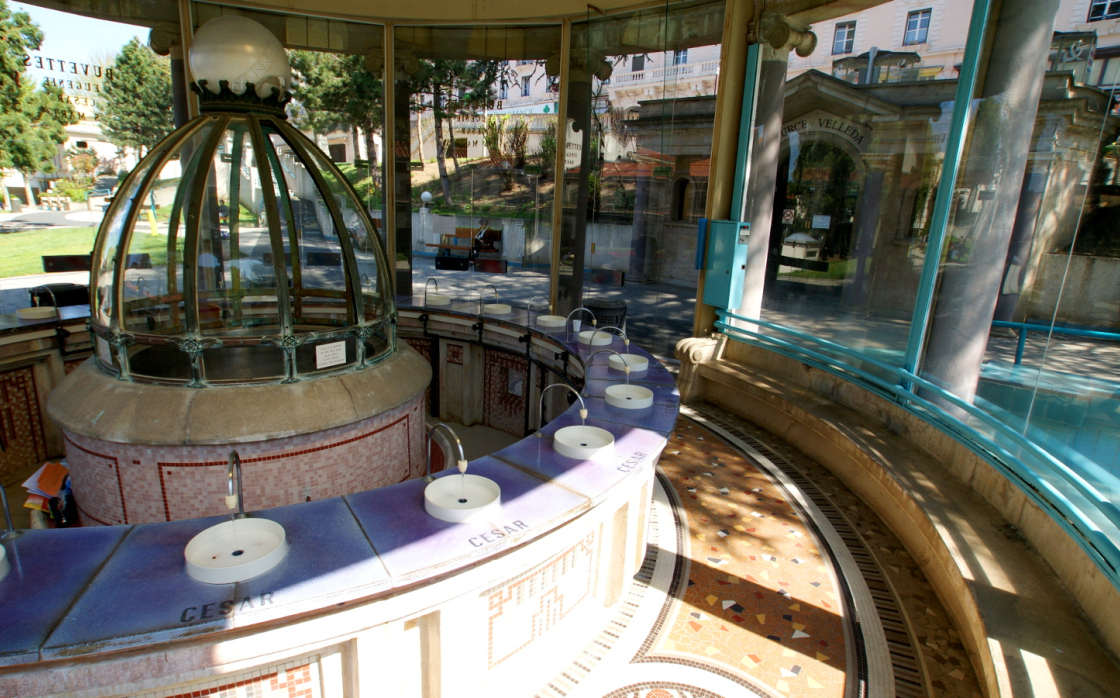
The Eugénie drink stand was more than the icon of the thermal spa, it was the embodiment of spa treatments (it also appeared in the Asterix story “Asterix and the Chieftain’s Shield”).
The “large spring” discovered in 1843 was named the “Eugénie spring” following the visit of Napoleon and the empress in 1862. The drink stand, which for a long time was a simple stone-edged well, was developed in 1872 and surrounded by a circular cast-iron counter sheltered under a cast-iron kiosk.
In 1913, Auguste Rouzaud, director of the spa, commissioned the Clermont-based architect Louis Jarrier to embellish the spring. Jarrier designed a glass bell-shaped cover that was worked like a piece of silverware. The new counter was coated with flamed sandstone and opaline.
In 1938, the municipality planned to extend and embellish the thermal spa and commissioned Antoine Chanet and Jean Liogier, architects from Vichy, to work on the drink stand. They replaced the kiosk with a tholos (a circular Greek temple) made from reinforced concrete, enhanced with a water mirror. The columns and bays of the tambour were reminiscent of those of the spa resort and provided a certain harmony. The outer edge of the drink stand was decorated with Greek ceramic mosaics, as were the decorative elements of the counter, designed by Gentil and Bourdet.
To echo this, the former building housing the spring, adjoining the drink stand, covered with simple wood trellises, was replaced by a lodge with a resolutely neo-Antique style (four Doric columns, an entablature, a pediment and semi-circular bays).
In the 1980s the building housing the spring accommodated the new channels for the Velléda spring, and became the “Pavillon Velléda”.
Today the spa water is used for exterior body treatments and is no longer ingested.
Additional information
The Eugénie refreshment room and the Velleda spring are part of the discovery trail ‘The town of waters in the Belle Epoque’, included in the ‘De-ci de-là’ leaflet. This document is available free of charge from the Royat Tourist Information Office and can be downloaded from the bottom of this page.
Outdoor visit only. Catering to follow.
Prices
- Free access.
Labels
